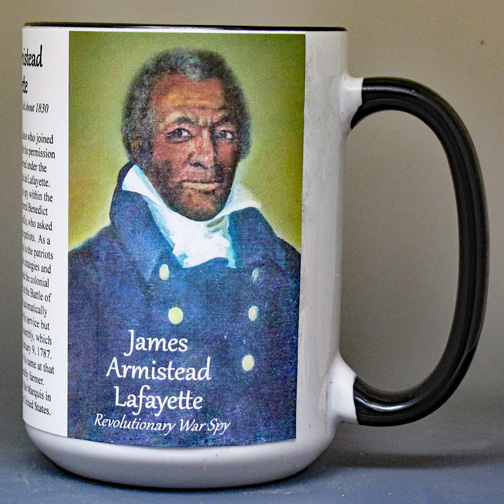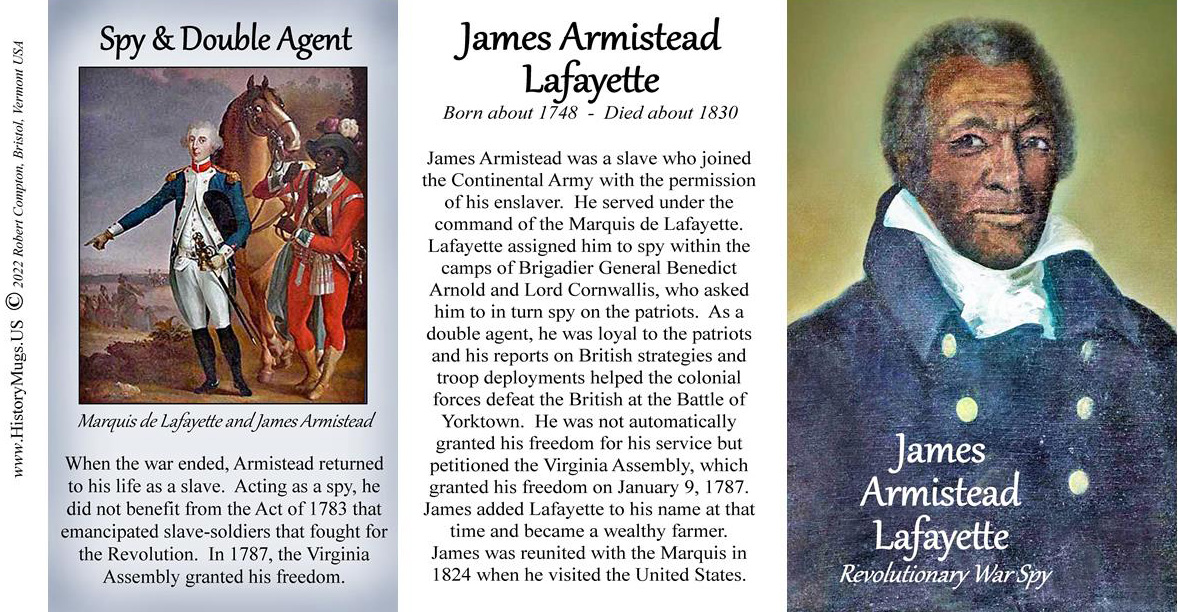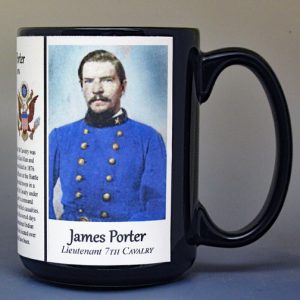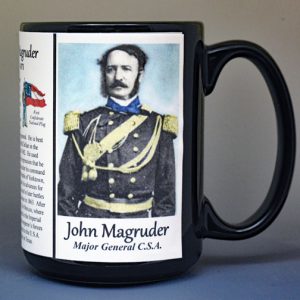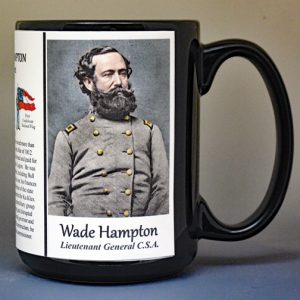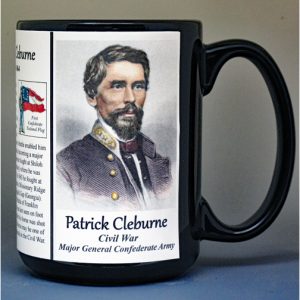Description
James Armistead was a slave who joined the Continental Army, with the permission of his enslaver. He served under the command of the Marquis de Lafayette. Lafayette assigned him to spy within the camps of Brigadier General Benedict Arnold and Lord Cornwallis, who asked him to in turn spy on the patriots. As a double agent, he was loyal to the patriots and his reports on British strategies and troop deployments helped the colonial forces defeat the British at the Battle of Yorktown. He was not automatically granted his freedom for his service but petitioned the Virginia Assembly, which granted his freedom on January 9, 1787. James added Lafayette to his name at that time and became a wealthy farmer. James Armistead Lafayette was reunited with the Marquis in 1824 when he visited the United States.
When the war ended, Armistead returned to his life as a slave. Acting as a spy, he did not benefit from the Act of 1783 that emancipated slave-soldiers that fought for the Revolution. In 1787, the Virginia Assembly granted his freedom.
Some of the Revolutionary War veterans lived until the time of the Civil War and a few died not long after that war. Prior to the Civil War, only the wealthy were able to afford to have their portraits drawn or painted. There were few images of the men and women who fought during the Revolutionary War. However, by living until the late 19th century when photography was more affordable, they were able to have their photographs taken and their stories recorded.
The Revolutionary War was fought from 1775 to 1783. It began as a revolt of the colonies against what they believed was unfair taxation. While it started as a conflict between Great Britain and the thirteen American colonies, it soon became a global conflict. France actively sided with the colonies, and the French naval fleet was instrumental in defeating the British at Yorktown. Holland supplied the colonies weapons, while Spain supplied funding and diverted British forces by fighting on a second front and winning back Spanish forts in Florida that they lost during the Seven Years War. No independent country sided with Great Britain, but Britain employed German mercenaries, known as Hessians.
This James Armistead Lafayette history mug is part of our Revolutionary War series which includes many of the notable figures who played major roles during this conflict.
The biographical History Mugs were created to teach and inspire individuals to learn about our diverse and interesting history. The biographies were researched and written by history enthusiast, Robert Compton. He colorized most of the historic photos and images used on the mugs, which were originally black and white or sepia tone. The images and biographies are imprinted on mugs at his studio in rural Vermont.
- Mugs are food and microwave safe.
- To preserve photographic quality we recommend hand washing.
- Mugs are usually shipped within 3-5 days.
- Shipping charges are lower when buying multiple mugs.

